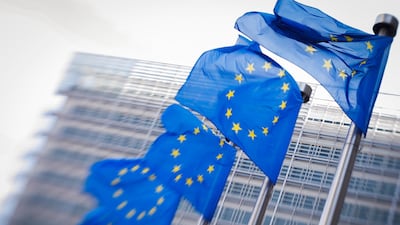If you needed extra proof that Italy’s public debt is the main event in Europe, look no further than a document released last week by the so-called “New Hanseatic League” – a group of eight fiscally cautious eurozone countries named in homage to the group of northern European trading powers whose zenith was in the 14th century.
The modern-day evocation of the league (plus Slovakia and the Czech Republic) wants the European Stability Mechanism (ESM), the monetary union’s rescue fund, to be given more powers. These would include monitoring national budgets and imposing losses on private creditors before handing out cash to countries in need. “A reinforced role for the ESM increases the credibility and effectiveness of the crisis management framework,” the finance ministers from the 10 countries wrote.
The discussion, at least as presented in the statement, looks largely academic on first glance. The signatories, including the Netherlands, Ireland and Finland, are careful to say that a stronger ESM shouldn’t interfere with the powers of the European Commission or the European Council, which police the public finances of member states. If you take the document at face value, this is just a way to make it easier for the ESM to do its job.
Similarly, calling on the ESM to “verify the adequacy of the borrower’s repayment capacity” isn’t exactly revolutionary. According to the treaty that established the mechanism, any rescue must be conditional on an assessment of whether the applicant nation’s public debt is sustainable. At present, this assessment should be done by the Commission and the European Central Bank, along with the International Monetary Fund “whenever appropriate and possible”. The Hanseatic League thinks this power should be shifted to the ESM. But the ESM already has to decide whether it wants to disburse money; so it already assesses whether a borrower can repay its loans.
Yet reading between the lines, the Hanseatic proclamation becomes much more interesting. For a start, it indicates the growing mistrust of the Commission from some EU members. Brussels stands accused of being too lenient – for example by granting too much “flexibility” during good times. A power struggle with the ESM has only just begun, and the 10 states want to make clear where they stand.
Most important, the document wants the EU to be more open about a dirty secret: just like private debt, public debt, too, can be restructured. Of course, that’s what happened in Greece, where creditors took a hit before Athens could be handed more money. But in the European narrative, Greece is treated as the perennial exception. It just can’t happen elsewhere.
Except it can, of course, and that’s what this document seems to be about. Italy, one of the EU’s and eurozone’s founding members, has unveiled a quintessentially populist budget, which has spooked markets and forced the Commission to ask Rome to rewrite its fiscal plans. This week, Italy’s Finance Minister Giovanni Tria met his EU colleagues in Brussels to explain how his numbers can add up.
_______________
Read more:
Italy's budget inflexibility likely to widen divide with EC
Explainer: What is behind Italy's fall-out with the European Commission?
_______________
Italy says in private that some of the most expensive measures, including an income support scheme and a lowering of the pension age, will take time to enforce and so won’t increase the deficit by as much as forecast. But Europe’s finance ministers have other questions, too. For example, how is it possible that growth will climb to 1.5 per cent in 2019, as Rome predicts, when the government also says its expansionary measures will partly remain on paper? On Monday, the eurozone’s finance ministers backed the Commission’s demand for a new budget plan from Italy.
With this backdrop, you can hardly blame the Hanseatic countries for seeking safeguards. Their argument is also theoretically sound. When public debt is unsustainable, it’s only right that restructuring happens before aid is disbursed. This helps the debtor nation recover more quickly, and ensures that good money isn’t thrown after bad. Greece is the model of how not to do it.
The trouble is that the change in approach advocated by Dublin and others could cause a seismic shift in the eurozone, by giving government bond investors another reason not to purchase from the most fragile states. This could cause a confidence crisis, which is why countries such as Italy and France generally oppose such a move.
The Hanseatic League’s proposal would make sense in the context of a full-blown reform of the eurozone, including the completion of the banking union and the creation of some elements of a fiscal union. That would make investors much more confident about the euro area’s resilience and less willing to take a punt against its member states. Indeed, one can’t blame the 10 countries for weighing on on such a difficult subject. In a way, Rome is unwillingly asking for it.
Yet the changes only make sense if the League’s push for “risk-reduction” is matched by greater “risk-sharing.” Unfortunately, Rome’s populist budget makes it nigh-on impossible for anyone else to support an even greater insurance mechanism for the eurozone.
The monetary union is stuck, and it’s hard to see how it can progress.

